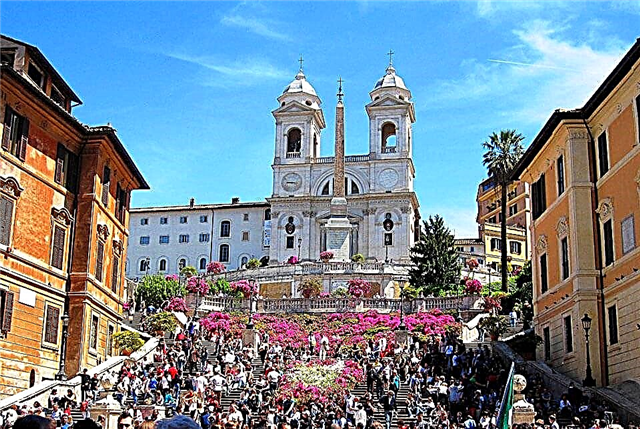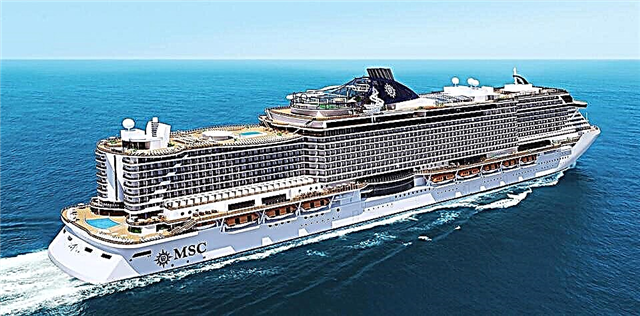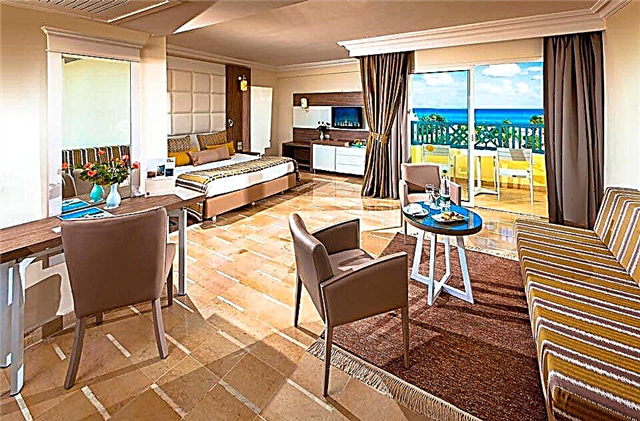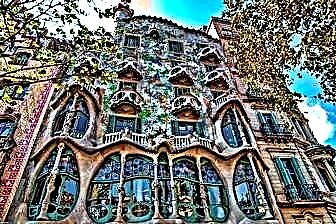Address: Russia, St. Petersburg, Pushkin
Main attractions: Catherine Park, Great Catherine Palace, Alexander Park, Alexander Palace
Coordinates: 59 ° 42'56.9 "N 30 ° 23'46.1" E
Content:
In the suburbs of St. Petersburg there is a unique place that attracts tourists like a magnet. The Tsarskoe Selo Museum Reserve is located in Pushkin, 25 km south of the northern capital. A special atmosphere reigns here, so walking around Tsarskoye Selo turns into a real pleasure. The small town has many historical monuments, museums and beautiful parks. What should you see first?

Bird's eye view of Tsarskoe Selo
Catherine Palace and Catherine Park
The first palace in Tsarskoe Selo was built in 1717-1723. Several famous architects worked on it. The royal residence acquired the expressive features of the Russian baroque thanks to the recognized virtuoso of architecture Francesco Bartolomeo Rastrelli.
The palace building is 306 m long. Its facades are decorated with white, blue and gold colors and have a festive look. It is known that 100 kg of gold were used for the gilding of the external and internal decor of the palace. In the northern part, a five-domed house church rises above the building.
Guided tours are organized around the Great Catherine Palace. Inside you can see a collection of old paintings and the famous Amber Room. The original room, decorated with amber, was stolen by the Nazis and disappeared without a trace during the Second World War.
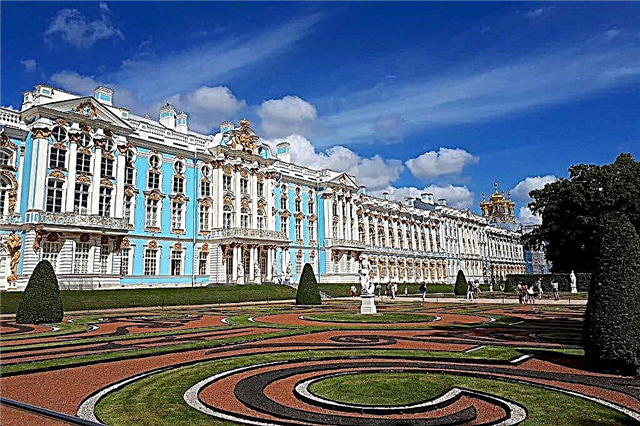
Facade of the Catherine Palace
The exquisite interiors that are shown to tourists today have been restored by modern craftsmen. To reproduce the lost treasures, they used about six tons of amber. It should be borne in mind that there are so many people who want to get to the Grand Palace that you will have to stand in a long queue.
Next to the magnificent palace building there is a huge park, which consists of the regular Old Garden and the landscaped English Park. The park area has beautiful alleys, picturesque ponds, canals, more than a hundred sculptures, bridges, monuments and pavilions. In the off-season and in winter, they are admitted here free of charge, and in summer - by tickets.

Large pond overlooking the "Grotto" pavilion
Tourists like the small and neat pavilion "Grotto", made in the tradition of Elizabethan Baroque. An elegant one-story white and blue building rises by the Big Pond and reminds of the water element. On the facade you can see the carved masks of the lord of the sea, Neptune, shells, newts, aquatic plants and dolphins.
Tourists always come to the beautiful fountain "Girl with a Jug". The original sculpture of the early 19th century is kept in the Russian Museum, and an exact copy of bronze is exhibited in the park. For many decades, the bent figure of a girl on a cliff has inspired poets and painters. Today it is considered one of the visiting cards of Tsarskoe Selo. It is curious that water enters the old fountain from the only spring that gushes on the territory of the Catherine Park.

Fountain "Girl with a jug"
If you want to admire the greenery and trees from above, climb the Granite Terrace. From the gallery, decorated with columns and sculptures, the old park and the Big Pond open up in full view.
Alexander Palace and Alexander Park
Tsarskoe Selo was one of the residences of the Russian sovereigns. Catherine II loved to be here and ordered to build a new palace for her adored grandson - the future Emperor Alexander I. The Catherine Palace was left for pompous receptions, and the Alexandrovsky Palace turned into a family nest of the royal family.

View of the Alexander Palace
The palace building looks much more modest than the Great Catherine Palace. It has two floors and is made in the best traditions of classicism. Side wings adjoin the main building with a luxurious colonnade. Inside there are halls for receiving visitors, drawing rooms, offices and living quarters of members of the imperial family.
The well-groomed Alexander Park is located near the palace. It consists of the New Garden and the Landscape Park.
Babolovsky Palace
In 1783-1786, a large palace was built for Prince Grigory Alexandrovich Potemkin. It has survived to this day in a dilapidated state, but it still attracts many tourists. Inside the brick ruins, you can see a round Tsar Bath made of gray granite.

View of Lake Babolovskoe
The palace buildings are surrounded by the green Babolovsky Park. There are no monuments, pavilions and cafes on its territory. Only forest, open meadows and small footpaths. During the walk, you can see the remains of the Tsar's water supply system, a destroyed grotto and a concrete pillbox, which were erected during the Great Patriotic War.
Linden, ash, oak and aspen trees grow in the park. There are areas overgrown with fir and pine. Hedgehogs, squirrels and forest birds live here. In autumn, the inhabitants of Pushkin gladly go to Babolovsky Park to pick mushrooms.
Pushkin museums
There are two museums in Tsarskoye Selo dedicated to Alexander Sergeevich Pushkin. The first was organized in the former imperial lyceum, where children of the nobility were sent to study. The elite educational institution existed from 1811 to 1843. Pushkin and his classmates were brought up here, many of whom later became Decembrists.

Memorial Museum-Lyceum of A.S. Pushkin
Tourists are shown beautiful interiors, rare furniture, old books, study rooms and rooms where students lived. The Memorial Lyceum Museum is located next to the Great Catherine Palace and is open any day, except Tuesday, from 10:30 to 17:00.
The second museum is a two-story house where in 1831 Pushkin lived, wrote poetry and prepared for publication Belkin's Tale and The Tale of Tsar Saltan. The beautiful mansion contains a collection of the poet's personal belongings. Separate halls of the dacha museum are dedicated to the works of V. A. Zhukovsky and N. M. Karamzin.

Monument to A.S. Pushkin in Tsarskoe Selo
Historical and Literary Museum
If you want to learn more about Tsarskoe Selo, go to the museum, which is located in the former building of the Police Department. The three-story colonnaded mansion was built in the 1820s. Its halls display objects of decorative and applied art, collections of paintings, drawings and sculptures, rare books, old coins and archaeological finds.
Visitors are told about the history of Tsarskoye Selo, the poetry of the Silver Age, the birth of the scout movement and the events that took place in Pushkin during the war. The museum is located on the street. Leontievskaya, 28. It is open from Saturday to Wednesday from 10:00 to 17:00.

Historical and Literary Museum of the city of Pushkin
Museum exposition about Anna Akhmatova
Tsarskoe Selo brought up not only Pushkin. It became the cradle for Anna Andreevna Akhmatova. The future poetess, and then Anna Gorenko, studied at the women's Mariinsky gymnasium in Tsarskoye Selo. Here she met her future husband Nikolai Gumilyov.
The museum displays photographs and autographs of Akhmatova. The icon of the Mother of God, presented to her by the lovers Gumilev, has survived. The exposition was created in the building of the Tsarskoye Selo gymnasium of arts - in the house number 17B on Leontievskaya street.

Museum exposition about Anna Akhmatova in the building of the Tsarskoye Selo gymnasium of arts
Excursions
The Tsarskoye Selo Museum Reserve is one of the UNESCO World Heritage Sites. This is a favorite place for foreign tourists who come all year round to get acquainted with St. Petersburg and its immediate suburbs.
They will go to Tsarskoe Selo independently and as part of organized groups. If there is not much time, it is more profitable to buy a ready-made tour. Bus excursions to Pushkin are organized by all travel agencies of St. Petersburg.
Buses start from the city center.Travelers are taken to Tsarskoe Selo, shown the Great Catherine Palace, taken through the park and given about an hour of free time. For participants in excursion groups, the queue to the palace is shorter. The trip is designed for 5.5-6 hours, that is, half a day, and costs from 2000 rubles. There are programs with a visit to the Tsarskoye Selo Lyceum.

Cameronova Gallery
If you want to see the sights without haste and fuss, come to the historical place on your own. Visit palaces and museums, take a walk in picturesque parks. In Tsarskoye Selo, festivals, imperial balls and poetry holidays are held, so at any time of the year you can be a participant in an exciting celebration. It is especially interesting for the New Year and Maslenitsa.
How to get there
It is convenient to get from St. Petersburg to the city by electric trains, which run from Vitebsky, Baltiysky railway stations and the Kupchino metro station. The road to the station "Detskoe Selo" takes only half an hour.

Top bath
Regular buses to Pushkin start from the Moskovskaya and Kupchino metro stations. Travel time depends on traffic on the roads - from 30 to 50 minutes. Taxis, buses and minibuses run around the city, so getting to the right place is not difficult at all.




